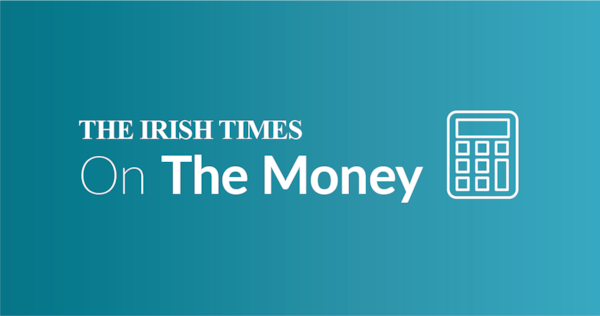1. Is Trump’s tariff plan working? That depends on your perspective. There is no doubt that it is raising cash for the US treasury through higher taxes on imports.
In the second quarter of this year, the imposition of tariffs was worth $50 billion extra to the US exchequer compared to last year. With the US budget heavily in deficit, the fundraising ability of tariffs has been a key Trump goal. It is, to date, the most obvious “ success” of the policy.
Also, with the exception of China – and some retaliation from Canada – the response of other countries has been limited.
The EU has threatened retaliation, but has not yet done so. This means that US exporters have not been disadvantaged in most foreign markets, with the exception of China. The average Chinese tariff on US imports is now around 33 per cent – having briefly peaked at 147.6 per cent on many products in mid-April. The average US tariff on China is around 50 per cent.
READ MORE
So win-win for the president? Is he managing to raise revenue and bully other countries not to retaliate using US economic muscle? To an extent, yes. And US support for the war in Ukraine and for Nato is clearly a factor, too, in the EU response.
2. What about the downsides for the US? These are considerable in terms of the wider economic impact of tariffs, even if the scale of the damage will depend on how far Trump pushes his tariffs.
Were they to remain at current levels – a hefty average of 15 to 17 per cent, depending on whose estimate you take, compared to 1.5 per cent in 2022 – the price to the US would be noticeable, though perhaps manageable. But if tariffs rise further, and remain at elevated levels, the economic risks rise sharply.
A key issue in understanding the impact of tariffs is that while the money comes in straight away, there are time lags in the economic impact becoming clear and the fallout emerging.
A lot of the cost of tariffs will find its way – eventually – to consumers. In some cases, the company selling the product can absorb some of the cost in its profit margin or spread it across markets globally. But often what is effectively a tax charge levied as the good enters the US is passed on to consumers.
This is starting to show through in US inflation figures, with a 2.7 per cent annual rise in June showing increases in products such as clothing, bed-linen and furniture, which are being affected by tariffs.
Researchers at Yale University estimate that the higher tariffs introduced to date will cost an average US household an additional $2,800 in higher prices. Some other estimates, such as those from the Tax Foundation, are significantly lower at around $1,700 in a full year. But all agree the hit will be substantial.
US economic growth is also likely to suffer in the short term, particularly if Trump hikes tariffs further. A recent report from investment bank Morgan Stanley warned that “a re-escalation of tariffs to April’s peak rates would likely spell a recession for the US and thereby the world”.
Were tariffs of 30 per cent on EU imports to remain in place for any length of time, for example, it would be likely to upend transatlantic trade in many sectors, disrupting supply chains and causing wider economic damage both in the US and EU. Also, the EU would respond with heavy tariffs on US imports.
3. So what happens now? EU negotiators are in Washington and will be trying to work out if a framework deal between the two sides is still possible. One had been more or less agreed, we are told, which is why Trump’s letter came as a bit of a bolt from the blue.
He has suggested that a deal may still happen, while sticking to the 30 per cent figure for now.
If a framework deal is done, there will be months of further talking to try to flesh out the details. If the talks fail and Trump pushes ahead with higher tariffs on the EU, then Europe will respond with tariffs of its own – and Trump has said he will match these by yet higher tariffs on EU goods. In other words, a transatlantic trade war.
A third possibility is that the deadline is extended again past August 1st. Whatever scenario lies ahead is going to involve ongoing uncertainty. With Trump, the chaos never ends. And the US president now faces a vital call - should he go all in on tariffs and push them yet higher? Emboldened by calm markets and reasonable economic data, he may well be tempted.
4. Might the US president withdraw his tariff threats again? It is possible that another bout of market upheaval could cause him to draw back, as it did in early April after his initial Liberation Day tariffs announcement. For now, however, markets are calmer and this may encourage Trump to try to double down on his tariff plans.
Trump’s so-called reciprocal tariff plan – the one he announced in early April with widespread across-the-board tariffs – is also the subject of legal challenges, which are worth watching.
A Federal Trade court ruled that he had exceeded his presidential mandate in interpreting his powers to impose tariffs widely without recourse to Congress. An appeal court put a stay on this ruling and is to hear legal argument on the issue at the end of the month. This could emerge as a key factor in coming months.
5. What about Trump’s desire to get investment back to the US in key sectors? This one is coming to a key point of decision, too, probably at the end of the month.
The context here is that Trump is looking at key sectors under a separate tariffs programme based on different legal grounding to the reciprocal tariffs.
The argument is that, for reasons of US security, there are key items which need to be made in the US or where Washington needs to be confident that the supply chains are secure. These are called “section 232 tariffs” as they relate to that section of a 1962 act.
Trump has already imposed tariffs on cars, steel and aluminium and has said he will impose them on copper. Of crucial interest to Ireland, his administration has also been compiling a report on semiconductors and pharma, looking at the supply chains in these sectors and the prospects for attracting investment back to the US. August 1st has reportedly been pencilled in as a day to release this report.
Trump said on Wednesday that tariffs on pharma could be imposed at an (unspecified) lower level at the end of this month and then rise over time to try to force these companies to serve the US market from American bases, rather than from countries like Ireland.
Industry sources speculate that the administration may set targets for companies to invest in the US over the next few years and threaten them with high tariffs in, say, 18 months, if they do not meet these targets
The industry has said that relocating production – or starting up a new unit in the US – would take four to five years and that, in any case, cost and labour availability will be key factors. Prices for US consumers could rise, they say, supply chains could be overturned and shortages could emerge if there are heavy tariffs.
It remains to be seen how this is reflected in the US government report on the sector. Trump’s goal appears driven in part by cutting out China and other countries considered “ unfriendly” from the supply chains for key products like medicines and semiconductors.
With the wider pharma sector being a key high-wage employer – with around 70,00 workers – in Ireland and a big tax contributor, this is a key area of Irish national interest.













